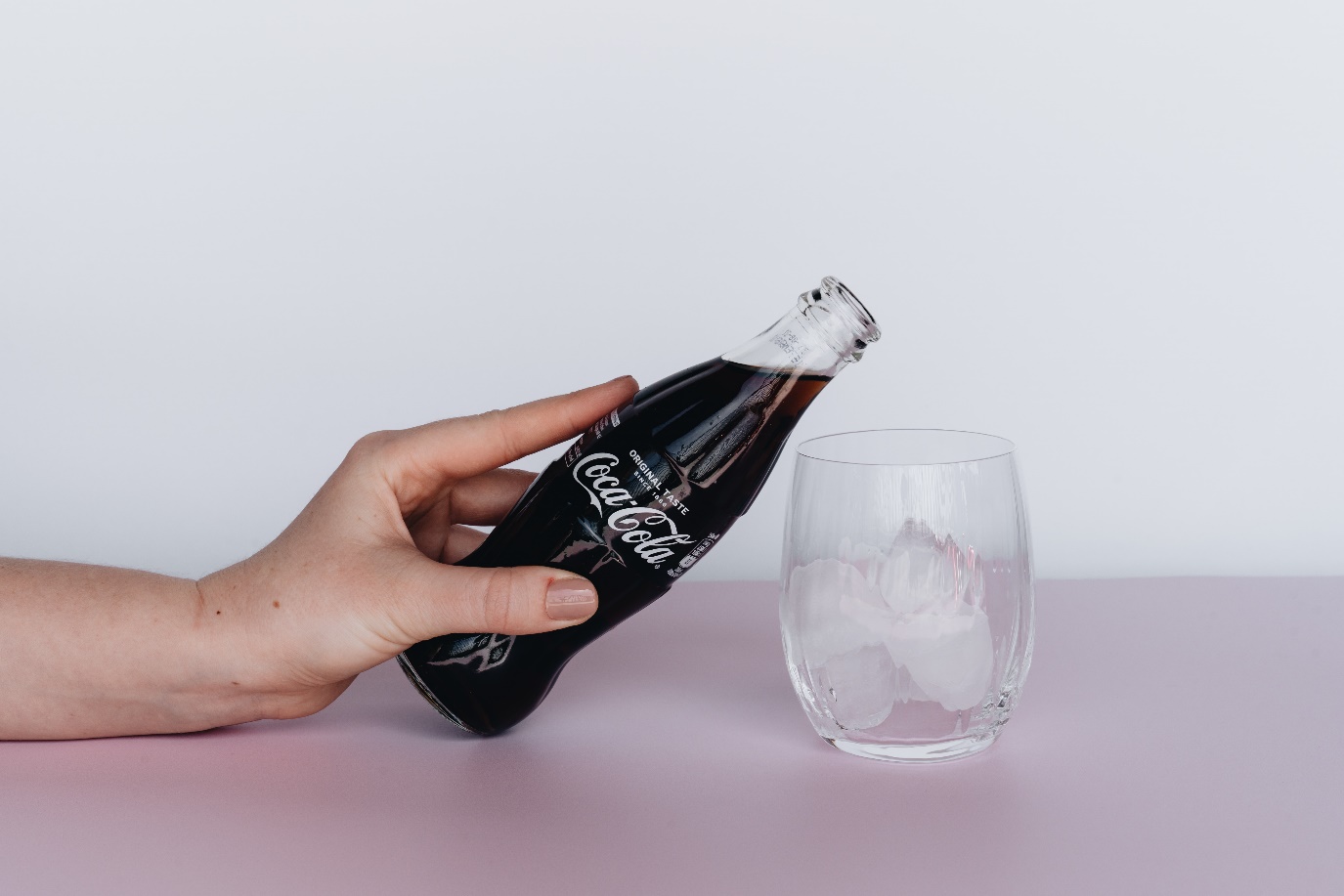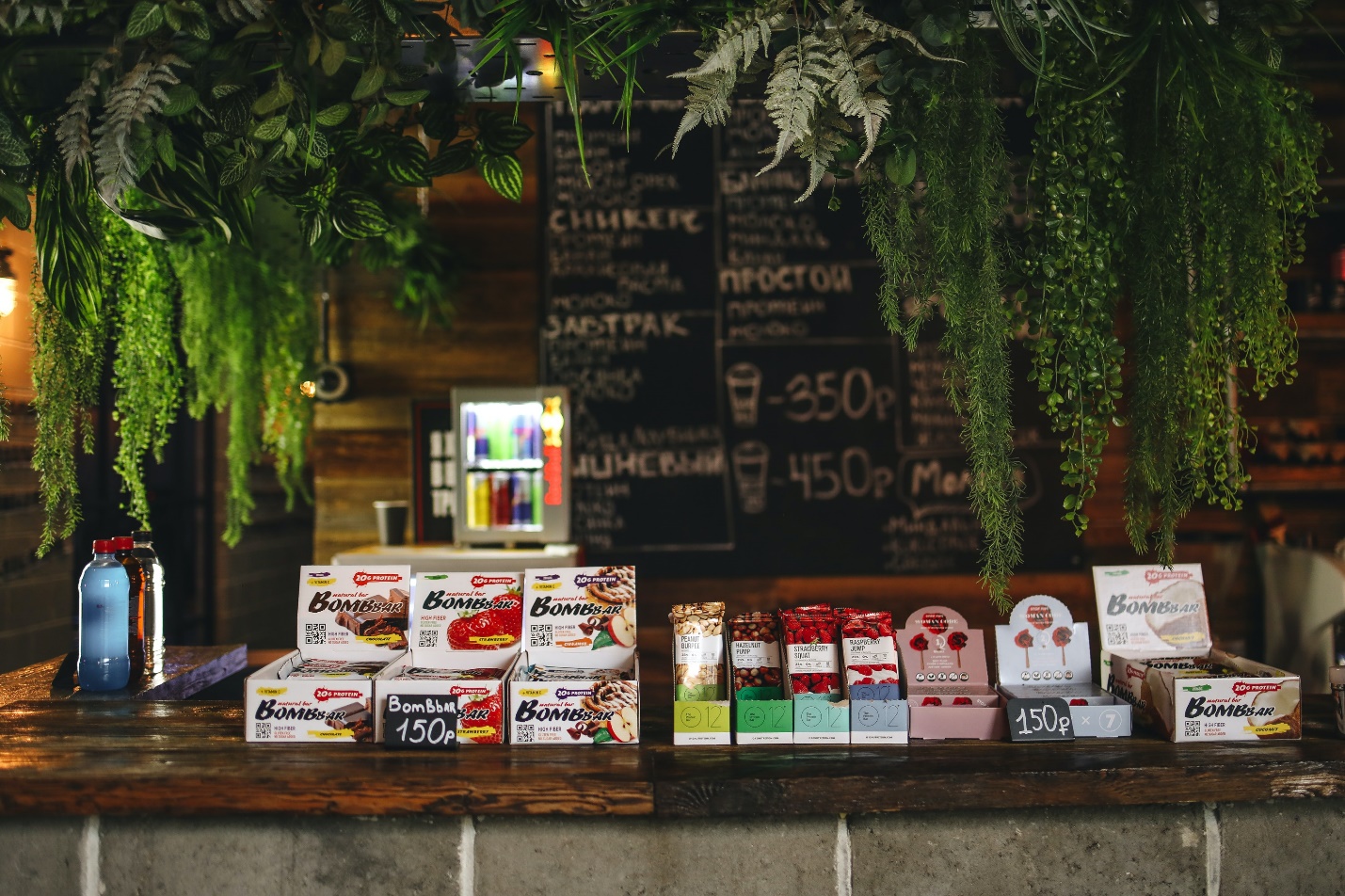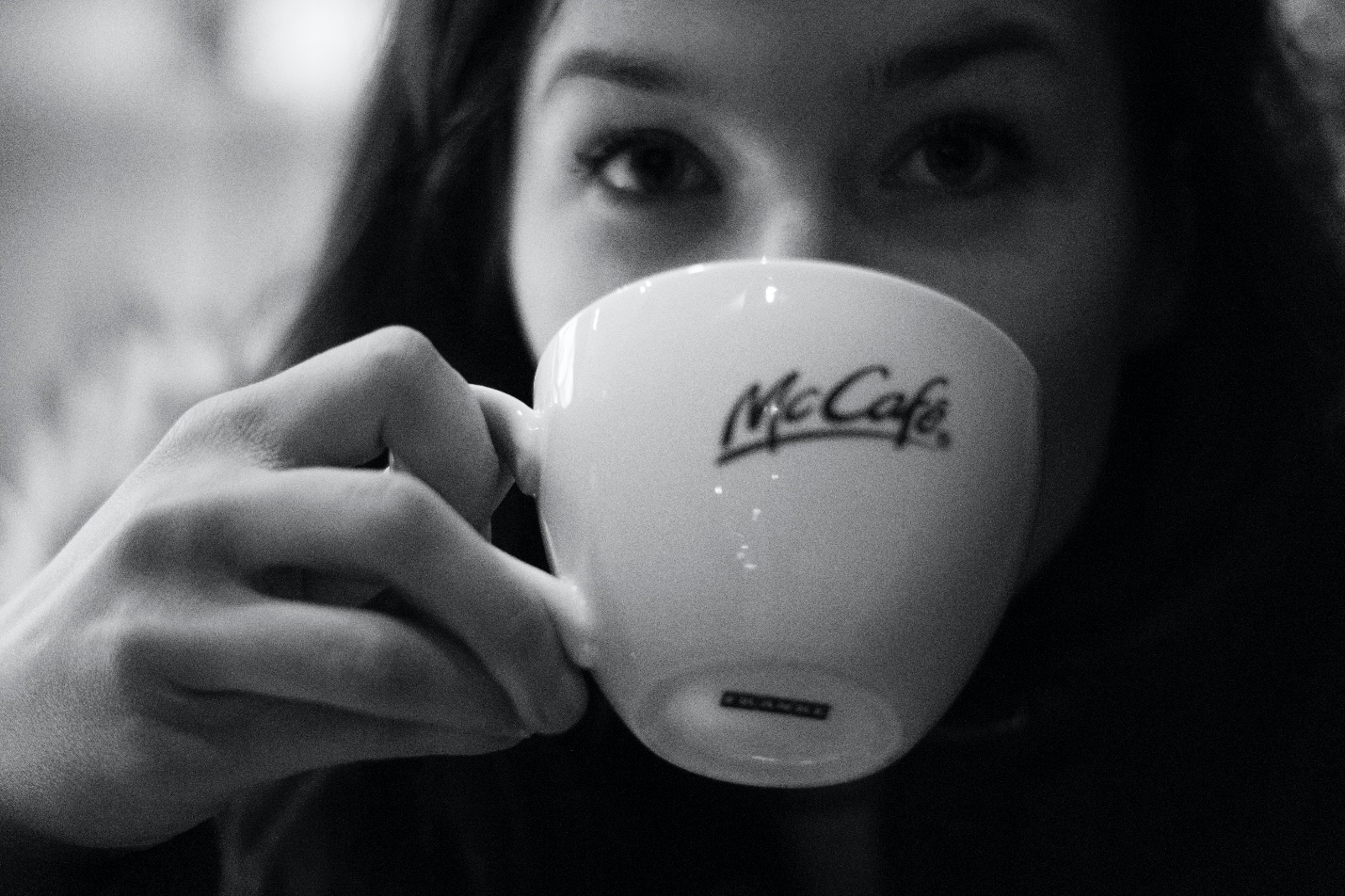Main Body
7 7/ Launching Business
Adapted from Principles of Marketing is adapted from a work produced and distributed under a Creative Commons license (CC BY-NC-SA) in 2010 by a publisher who has requested that they and the original author not receive attribution. This adapted edition is produced by the University of Minnesota Libraries Publishing through the eLearning Support Initiative.

SOURCE: Markus Spiske .
Launching Your Business
Learning Objectives
- Understand the branding decisions firms make when they’re developing new products.
- Identify the various levels of packaging for new products.
Branding, Labelling, and Packaging
What comes to mind when someone says Coke or Nike or Microsoft? According to BusinessWeek magazine, the Coca-Cola brand is the strongest brand in the world. However, a global study of consumers sponsored by Reuters found Apple has the best brand. What is a “brand” and what do these studies mean when they report that one brand is the strongest or the best?
Branding
We have mentioned brands periodically throughout this chapter. But what is a brand? A brand is a name, picture, design, or symbol, or combination of those items, used by a seller to identify its offerings and to differentiate them from competitors’ offerings. Branding is the set of activities designed to create a brand and position it in the minds of consumers. Did you know The Beatles started a recording studio called Apple? When Apple Computer (the iPod company) was formed, Apple Corp., Ltd. (the Beatles’ recording studio), sued Apple Computer because two companies with the same name can create confusion among consumers. This was not much of a problem when Apple was only selling computers but following the release of the iPod and launch of Apple’s iTunes program, the companies’ offerings are similar enough for consumers to confuse the two companies and their products. In fact, it was not until recently that they settled the lawsuit over the name, some 30 years after they filed the initial lawsuit. The situation signifies how important brand names are to the companies that own them.
A successful branding strategy is one that accomplishes what Coke and Apple have done, it creates consumer recognition of what the brand (signified by its name, picture, design, symbol, and so forth) means. When marketing professionals are considering whether a potential new offering fits a company’s image, they are very concerned about whether the offering supports the organization’s brand and position in the consumer’s mind. For this reason, many consider branding to be much more than how the product is packaged or labelled, and they are right. Characteristics of the offering, such as pricing and quality, must support the brand’s position. If Apple (the brand) stands for innovation, then products and services must be innovative. But branding itself refers to strategies that create an image and position in the consumers’ minds.
A brand name, like Apple, is the spoken part of a brand’s identity. A brand mark is the symbol, such as Coke’s wave or Apple Computer’s multicolor apple (not to be confused with Apple Records’ green apple), associated with a brand. Brand names and brand marks are important to companies because consumers use them to make choices. That is why it was important to sort out the Apple brand. Each company wanted to make sure that consumers were getting what they wanted and would know what each brand meant.
An important decision companies must make is under which brand they will market a new offering. For example, Black & Decker makes power tools for consumers under its Black & Decker brand, while tools for more serious do-it-yourself and professionals are under its DeWalt brand. If Black & Decker added to its DeWalt line new products such as coolers, portable radios, CD players, and other accessories construction professionals might find useful at a job site, the company would create a brand extension. A brand extension involves using an existing brand name or mark for a new product category.

SOURCE: Pixabay.
Why would Black & Decker add these accessories to the DeWalt line? If the company did, it would be because DeWalt already has an excellent reputation for high-quality, long-lasting durability, and performance among construction professionals. These same professionals would trust the DeWalt brand to deliver. How a company like Black & Decker goes about building this trust is the subject of later chapters. For now, let us consider whether it is better for a company to market a new product via a brand extension or create an entirely new brand for the product.
Firms should consider when branding a new offering that they are not cannibalizing their other products. Cannibalization occurs when a firm’s new offering eats into the sales of one of its older offerings. (Ideally, when you sell a new product, you hope that all its sales come from your competitors’ buyers or buyers that are new to the market.) A completely new offering will not result in cannibalization, whereas a line extension likely will. A brand extension will also result in some cannibalization if you sell similar products under another brand. For example, if Black & Decker already had an existing line of coolers, portable radios, and CD players when the DeWalt line launched, the new DeWalt offerings might cannibalize some of the Black & Decker offerings. Some marketers argue that cannibalization can be a good thing because it is a sign that a company is developing new and better offerings. These people believe that if you do not cannibalize your own line, then your competitors will.
Packaging Decisions
Another set of questions to consider involves the packaging on which a brand’s marks and name will be prominently displayed. Sometimes the package itself is part of the brand. For example, the curvaceous shape of Coca-Cola’s Coke bottle is a registered trademark. If you decide to market in a similar-shaped bottle, Coca-Cola’s attorneys will have grounds to sue you.

SOURCE: alleksana.
Sometimes the package itself is part of a licensed brand. Coke’s curvaceous bottle is an example. Packaging must fulfill several important functions, including communicating the brand and its benefits; protecting the product from damage and contamination during shipment, as well as damage and tampering once it is in retail outlets; preventing leakage of the contents; presenting government-required warning and information labels.
Sometimes packaging can fulfill other functions, such as serving as part of an in-store display designed to promote the offering. A single wholesale unit of a product, such as these empty cartons shown here, is an example of secondary packaging. Each of these boxes might hold, for example, 24 cans of car polish or 36 cans of bug spray.

SOURCE: Norma Mortenson.
Primary packaging holds a single retail unit of a product. For example, a bottle of Coke, a bag of M&Ms, or a ream of printer paper (500 sheets) are all examples of primary packages. Primary packaging can protect and promote products and get the attention of consumers. Primary packaging can also demonstrate the proper use of an offering, provide instructions on how to assemble the product, or any other needed information. If warning or nutrition labels are required, they must be on the primary packaging. Primary packaging can be bundled together as well. Consumers can buy bottles of Coke sold in six-packs or cans of Coke in 12-packs, for example.
Secondary packaging holds a single wholesale unit of a product. A case of M&M bags is an example, as are cartons of reams of paper. Secondary packaging is designed more for retailers than consumers. It does not have to carry warning or nutrition labels but is still likely to have brand marks and labels. Secondary packaging further protects the individual products during shipping.
Tertiary packaging is packaging designed specifically for shipping and efficiently handling large quantities. When a Coca-Cola bottler ships cases of Cokes to a grocery store, they are stacked on pallets (wooden platforms) and then wrapped in plastic. Pallets can be easily moved by a forklift truck and can even be moved within the grocery store by a small forklift. This product is bound in tertiary packaging so that mass quantities of it can be stacked on pallets and moved with a forklift.

SOURCE: Tiger Lily.
A product’s packaging can benefit the customer beyond just protecting the offering while it is being shipped. No-spill caps, for example, can make it easier for you to use your laundry detergent or prevent spills when you are adding oil to your car’s engine. And, as we have noted, secondary packaging (and tertiary packaging) can serve as part of an in-store display, adding value for your retailers.
Key Takeaways
A brand is a name, picture, design, or symbol, or combination of those items, used by a seller to identify its offerings and differentiate them from competitors’ offerings. Branding is the set of activities designed to create a brand and position it relative to competing brands in the minds of consumers. An important decision companies must make is under which brand they will market a new offering. A brand extension involves using an existing brand name or brand mark for a new product or category (line) of products. Cannibalization occurs when a company’s new offering eats into the sales of one of its older offerings. It is something to be avoided in most cases, but it can also be a sign of progress because it means a company is developing new and better products. Packaging protects products from damage, contamination, leakage, and tampering, but it is also used to communicate the brand and its benefits, product warnings, and proper use.
Exercises
How do brands help companies market their products?
What is the purpose of a brand extension?
Name the basic packaging used in marketing.
Managing New Products

SOURCE: Laryssa.
Learning Objectives
-
Explain how organizations manage offerings after being introduced.
-
Explain how an offering may be different in international markets.
-
Explain the product life cycle, objectives, and strategies for each stage.
The Product Life Cycle
Over 20,000 new offerings, including convenience foods, health and beauty aids, electronics, automobiles, pharmaceutical products, hotels, restaurants, and so on, enter the marketplace each year. For example, in 2006 almost 1,400 food products making a “whole grain claim” were introduced (Roskelly, 2010). Other recent new product introductions include many technological products such as Nintendo’s Wii, iPhones, and digital video recorders (DVRs); many new personal care products such as new fragrances of shampoo and conditioner and new flavours of toothpaste; and new convenience foods such as frozen meals, “100-calorie pack” snacks, and cereal bars (Hunter, 2008).
Once a product is created and introduced in the marketplace, the offering must be managed effectively for the customer to receive value from it. Only if this is done will the product’s producer achieve its profit objectives and be able to sustain the offering in the marketplace. The process involves making many complex decisions, especially if the product is being introduced in global markets. Before introducing products in global markets, an organization must evaluate and understand factors in the external environment, including laws and regulations, the economy, and stage of economic development, the competitors, and substitutes, cultural values, and market needs. Companies also need expertise to launch products in foreign markets. Given many constraints in international markets, companies might initially introduce a product in limited areas abroad. Other organizations, such as Coca-Cola, decide to compete in markets worldwide.65
The product life cycle (PLC) includes the stages the product goes through after development, from introduction to the end of the product. Just as children go through different phases in life (toddler, elementary school, adolescent, young adult, and so on), products and services also age and go through different stages. The PLC is a beneficial tool that helps marketers manage the stages of a product’s acceptance and success in the marketplace, beginning with the product’s introduction, its growth in market share, maturity, and decline in market share. Other tools such as the Boston Consulting Group matrix and the General Electric approach may also manage and decide about what to do with products. For example, when a market is no longer growing but the product is doing well (cash cow in the BCG approach), the company may decide to use the money from the cash cow to invest in other products they have rather than continuing to invest in the product in a no-growth market.
The product life cycle can vary for different products and different product categories. The figure below “Life Cycle” illustrates an example of the product life cycle, showing how a product can move through four stages. However, not all products go through all stages and the length of a stage varies. For example, some products never experience market share growth and are withdrawn from the market.

Other products stay in one stage longer than others. For example, in 1992, PepsiCo introduced a product called Clear Pepsi, which went from introduction to decline rapidly. Diet Coke entered the growth market soon after its introduction in the early 1980s and then entered (and remains in) the mature stage of the product life cycle. New computer products and software and video games often have limited life cycles, whereas product categories such as diamonds and durable goods (kitchen appliances) generally have longer life cycles. How a product is promoted, priced, distributed, or changed can also vary throughout its life cycle. Let us now look at the various product life cycle stages and what characterizes each.
The Introduction Stage
The first stage in a product’s life cycle is the introduction stage. The introduction stage is the same as commercialization, or the last stage of the new product development process. Marketing costs are typically higher in this stage than in other stages. As an analogy, think about the amount of fuel a plane needs for takeoff relative to the amount it needs while in the air. Just as an airplane needs more fuel for takeoff, a new product, or service needs more funds for introduction into the marketplace. Communication (promotion) is needed to generate awareness of the product and persuade consumers to try it, and placement alternatives and supply chains are needed to deliver the product to the customers. Profits are often low in the introductory stage because of the research and development costs and the marketing costs necessary to launch the product.
The length of the introductory stage varies for different products. However, by law in the United States, a company is only allowed to use the label “new” on a product’s package for six months. An organization’s objectives during the introductory stage often involve educating potential customers about its value and benefits, creating awareness, and getting potential customers to try the product or service. Getting products and services, particularly multinational brands, accepted in foreign markets can take even longer. Companies introducing products and services abroad generally must have the financial resources to make a long-term (longer than a year) commitment to their success.
The specific promotional strategies a company uses to launch a product vary depending on the type of product and the number of competitors it faces in the market. Firms that manufacture products such as cereals, snacks, toothpastes, soap, and shampoos often use mass marketing techniques such as television commercials and Internet campaigns and promotional programs such as coupons and sampling to reach consumers. To reach wholesalers and retailers such as Walmart, Target, and grocery stores, firms use personal selling. Many firms promote to customers, retailers, and wholesalers. Sometimes other, more targeted advertising strategies are employed, such as billboards and transit signs (signs on buses, taxis, subways, and so on). For more technical or expensive products such as computers or plasma televisions, many firms use professional selling, informational promotions, and in-store demonstrations so consumers can see how the products work.

SOURCE: Polina Tankilevitch.
During introduction, an organization must have enough distribution outlets (places where the product is sold, or the service is available) to get the product or service to the customers. The product quantities must also be available to meet demand. For example, IBM’s ThinkPad was a big hit when it was first introduced, but the demand for it was so great that IBM could not produce enough of the product. Cooperation from a company’s supply chain members, its manufacturers, wholesalers, and so forth, helps ensure that supply meets demand, and that value is added throughout the process.
When you were growing up, you may remember eating Rice Krispies Treats cereal, a very popular product. The product was so popular that Kellogg’s could not keep up with initial demand and placed ads to consumers apologizing for the problem. When demand is higher than supply, the door opens for competitors to enter the market, which is what happened when the microwave was introduced. Most people own a microwave, and prices have dropped significantly since Amana introduced the first microwave at a price of almost $500. As consumers in the United States initially saw and heard about the product, sales increased from 40,000 units to over a million units in only a few years. Sales in Japan increased even more rapidly because of a lower price. Because of the high demand in both countries, many competitors entered the market and prices dropped.66
Product pricing strategies in the introductory stage can vary depending on the type of product, competing products, the extra value the product provides consumers versus existing offerings, and the costs of developing and producing the product. Organizations want consumers to perceive that a new offering is better or more desirable than existing products. Two strategies that are widely used in the introductory stage are penetration pricing and skimming. A penetration pricing strategy involves using a low initial price to encourage many customers to try a product. The organization hopes to sell a high volume to generate substantial revenues. New varieties of cereals, fragrances of shampoo, scents of detergents, and snack foods are often introduced at low initial prices. Seldom does a company use a high price strategy with a product such as this. The low initial price of the product is often combined with advertising, coupons, samples, or other special incentives to increase awareness of the product and get consumers to try it.
A company uses a skimming pricing strategy, which involves setting a high initial price for a product, to more quickly recoup the investment related to its development and marketing. The skimming strategy attracts the top, or high-end, of the market. This market comprises customers who are not as price sensitive or who are early adopters of products. Firms that produce electronic products such as DVRs, plasma televisions, and digital cameras set their prices high in the introductory stage. However, the high price must be consistent with the product and the other marketing strategies being used to promote it. For example, engaging in more personal selling to customers, running ads targeting specific groups of customers, and placing the product in a few distribution outlets are likely to be strategies firms use with a skimming approach.
The Growth Stage
If a product is accepted by the marketplace, it enters the growth stage of the product life cycle. The growth stage is characterized by increasing sales, more competitors, and higher profits. Unfortunately for the firm, the growth stage attracts competitors who enter the market quickly. For example, when Diet Coke experienced outstanding success, Pepsi soon entered with Diet Pepsi. You notice that both Coca-Cola and Pepsi have similar competitive offerings in the beverage industry, including their own brands of bottled water, juice, and sports drinks. As additional customers buy the product, manufacturers must ensure that the product remains available to customers or risk them buying competitors’ offerings. For example, the producers of video game systems such as Nintendo’s Wii could not keep up with consumer demand when the product was first launched. Some consumers purchased competing game systems such as Microsoft’s Xbox.

SOURCE: Stas Knop.
A company sometimes increases its promotional spending on a product during its growth stage. Instead of encouraging consumers to try the product, the promotions focus on the specific benefits it offers and values relative to competitors. Although the company must still inform and educate customers, it must counter the competition. Emphasizing the advantages of the product’s brand name can help a company maintain its sales in the face of competition. Although different organizations produce personal computers, a highly recognized brand such as IBM strengthens a firm’s advantage when competitors enter the market. New offerings that use the same successful brand name as a company’s existing offerings, which is what Black & Decker does with some of its products, can give a company a competitive advantage. Companies typically make a profit during the growth stage because more units are being sold.
The number of distribution outlets (stores and dealers) used to sell the product can also increase during the growth stage as a company tries to reach as much of the marketplace as possible. Expanding a product’s distribution and increasing its production to ensure its availability at different outlets usually results in a product’s costs remaining high during the growth stage. The price of the product itself typically remains at about the same level during the growth stage, although some companies reduce their prices slightly to attract additional buyers and meet the competitors’ prices. Companies hope by increasing their sales, they also improve their profits.
The Maturity Stage
After many competitors enter the market and the number of potential new customers declines, the sales of a product typically level off. This shows that a product has entered the maturity stage of its life cycle. Most consumer products are in the mature stage of their life cycle; their buyers are repeat purchasers versus new customers. Intense competition causes profits to fall until only the strongest players remain. The maturity stage lasts longer than other stages. Quaker Oats and Ivory Soap are products in the maturity stage, they have been on the market for over 100 years.
Given the competitive environment in the maturity stage, many products are promoted heavily to consumers by stronger competitors. The strategies used to promote the products often focus on value and benefits that give the offering a competitive advantage. The promotions aimed at a company’s distributors may also increase during the mature stage. Companies may decrease the price of mature products to counter the competition. However, they must be careful not to get into “price wars” with their competitors and destroy all the profit potential of their markets, threatening a firm’s survival. Intel and Advanced Micro Devices (AMD) have engaged in several price wars about their microprocessors. Likewise, Samsung added features and lowered the price on its Instinct mobile phone, engaging in a price war with Apple’s iPhone. With the weakened economy, many online retailers engaged in price wars during the 2008 holiday season by cutting prices on their products and shipping costs; they repeated this price war strategy in 2011. Although large organizations such as Amazon.com can absorb shipping costs, price wars often hurt smaller retailers. Many retailers learned from their mistakes and ordered less inventory for the 2009 holiday season; it remains to be seen what will happen in the 2012 holiday season.
Companies are challenged to develop strategies to extend the maturity stage of their products, so they remain competitive. Many firms do so by modifying their target markets, their offerings, or their marketing strategies. Next, we look at each of these strategies.
Changing the target market helps a company attract different customers by seeking new users, going after different market segments, or finding new uses for a product to attract additional customers. Financial institutions and automobile dealers realized that women have increased buying power and now market for them. With the growth in the number of online shoppers, more organizations sell their products and services through the Internet. Entering new markets provides companies an opportunity to extend the product life cycles of their different offerings.

SOURCE: Stefan Stefancik.
Many companies enter different geographic markets or international markets as a strategy to get new users. A product that might be in the mature stage in one country might be in the introductory stage in another market. For example, when the U.S. market became saturated, McDonald’s began opening restaurants in foreign markets. Cell phones were very popular in Asia before they were introduced in the United States. Many cell phones in Asia are being used to scan coupons and to charge purchases. However, the market in the United States might not be ready for that type of technology.
Changing the product, such as changing its packaging, size, flavours, colours, or quality can also extend the product’s maturity stage. The 100-Calorie Packs created by Nabisco provide an example of how a company changed the packaging and size to provide convenience and 100-calorie portions for consumers. While the sales of many packaged foods fell, the sales of the 100-Calorie Packs increased to over $200 million, prompting Nabisco to repackage more products (Hunter, 2008). Kraft Foods extended the mature stage of different crackers such as Wheat Thins and Triscuits by creating different flavours. Although not popular with consumers, many companies downsize (or decrease) the package sizes of their products or the amount of the product in the packages to save money and keep prices from rising too much.

SOURCE: Gabriel Freytez.
Car manufacturers modify their vehicles slightly each year to offer new styles and additional safety features. Every three to five years, automobile manufacturers do more extensive modifications. Changing the package or adding variations or features are common ways to extend the mature stage of the lifecycle. Pepsi recently changed the design and packaging of its soft drinks and Tropicana juice products. However, consumers thought the new juice package looked like a less expensive brand, which made the quality of the product look poorer. As a result, Pepsi resumed the use of the original Tropicana carton. Pepsi’s redesigned soda cans also received negative consumer reviews.
Video 1. How to Successfully Rebrand Your Company | Inc.
When introducing products to international markets, firms must decide if the product can be standardized (kept the same) or how much adaptation, or changing, of the product to meet the needs of the local culture is necessary. Although it is much less expensive to standardize products and promotional strategies, cultural and environmental differences usually require some adaptation. Product colours and packages and product names must often be changed because of cultural and legal differences. For example, in many Asian and European countries, Coca-Cola’s diet drinks are called “light,” not diet, because of legal restrictions on how the word diet can be used. GE makes smaller appliances such as washers and dryers for the Japanese market because houses are smaller and do not have the room for larger models. Hyundai Motor Company had to improve the quality of its automobiles to compete in the U.S. market. Companies must also examine the external environment in foreign markets since the regulations, competition, and economic conditions vary as well as the cultures.
Some companies change their marketing strategy for one or more marketing variables of their products. For example, many coffee shops and fast food restaurants such as McDonald’s now offer specialty coffee that competes with Starbucks. As a result, Starbucks’ managers decided it was time to change the company’s strategy. Over the years, Starbucks had added lunch offerings and moved away from grinding coffee in the stores to provide faster service for its customers. However, customers missed the coffee shop atmosphere and the aroma of freshly brewed coffee and did not like the smell of all the lunch items.

SOURCE: Ade Rifaie.
Starbucks’ former CEO and founder Howard Schultz returned to the company because of the falling market share. Schultz hired consultants to determine how to change the firm’s offering and extend the maturity stage of their life cycle. Subsequently, Starbucks changed the atmosphere of many of its stores back to that of traditional coffee shops, changed its lunch offerings in many stores, and resumed grinding coffee in stores to provide the aroma customers missed. The company also changed some of its offerings to provide health-conscious consumers lower-calorie alternatives (Horovitz, 2008). After the U.S. economy weakened in 2009, Starbucks announced it would begin selling instant coffee for about a dollar a cup to appeal to customers who were struggling financially but still wanted a special cup of coffee. The firm also changed its communication by utilizing more interactive media such as blogs.
Unlike the over-extension by Starbucks, McDonald’s plans to add 14,000 coffee bars to selected stores.67 Besides the coffee bars, many McDonald’s stores are remodelling their interiors to feature flat screen televisions, recessed lighting, and wireless Internet access. Other McDonald’s restaurants kept their original design, which customers still like.

SOURCE: Mjr293.
The Decline Stage
When sales decrease and continue to drop to lower levels, the product has entered the decline stage of the product life cycle. In the decline stage, changes in consumer preferences, technological advances, and alternatives that satisfy the same need can lead to a decrease in demand for a product. How many of your fellow students do you think have used a typewriter, adding machine, or slide rule? Computers replaced the typewriter and calculators replaced adding machines and the slide rule. Ask your parents about eight-track tapes, which were popular before cassette tapes, which were popular before CDs, which were popular before MP3 players and Internet radio. Some products decline slowly. Others go through a rapid level of decline. Many fads and fashions for young people have very short life cycles and go “out of style” quickly. If you have ever asked your parents to borrow clothes from the 1990s, you may be amused at how much the styles have changed. Similarly, many students do not have landline phones or VCR players and cannot believe that people still use the “outdated” devices. Some outdated devices, like payphones, disappear almost completely as they become obsolete.
Technical products such as digital cameras, cell phones, and video games that appeal to young people often have limited life cycles. Companies must decide what strategies to take when their products enter the decline stage. To save money, some companies try to reduce their promotional expenditures on these products and the number of distribution outlets in which they are sold. They might implement price cuts to get customers to buy the product. Harvesting the product entails gradually reducing all costs spent on it, including investments made in the product and marketing costs. By reducing these costs, the company hopes that the profits from the product will increase until their inventory runs out. Another option for the company is divesting (dropping or deleting) the product from its offerings. The company might choose to sell the brand to another firm or simply reduce the price drastically to get rid of all remaining inventory. If a company keeps the product, it may lose money or make money if competitors drop out. Many companies decide the best strategy is to modify the product in the maturity stage to avoid entering the decline stage.
The Exit Stage
If a company cannot liquidate their remaining stock, they might end up stuck with it. According to the Copenhagen Fashion Summit, 92 million tonnes of solid waste is dumped into landfills each year (Davis, 2019). Grocery stores in the United States throw away 33.3% of food it produces (133 billion pounds of food) because of overstocked product displays; expectation of perfection (quality); sell-by dates; damaged goods and unpopular items (Jacobs, 2014). Walgreens, donates 5 million pounds of food to charity (see: Marketplace.org for a full article on what do stores do with unsold merchandise?). Business owners face the challenge of understanding their customers to reduce wastage, and consumers are challenged to reduce unnecessary materialism.

SOURCE: Tom Fisk.
Table 1. Strategies for Success at Each Stage of the Product Life Cycle

SOURCE: Introduction to Business by Rice University under Creative Commons Attribution 4.0 International License, except where noted.
Key Takeaways
The product life cycle helps a company understand the stages (introduction, growth, maturity, and decline) a product or service may go through once it is launched in the marketplace. The number and length of stages can vary. When a product is launched or commercialized, it enters the introduction stage. Companies must try to generate awareness of the product and encourage consumers to try it. During the growth stage, companies must show the product’s benefits and value to persuade customers to buy it versus competing products. Some products never experience growth. Many products are in the mature stage. In the mature stage, sales level off and the market typically have many competitors. Companies change the target market, the offering, or the marketing mix to extend the mature stage and keep from going into decline. If a product goes into decline, a company must decide whether to keep the product, harvest and reduce the spending on it until all the inventory is sold, or divest and get rid of the product.
Exercises
Explain what a firm that sells a product with a limited life cycle (such as software) should do in each stage, so there is not a lot of inventory left over when a newer version is introduced?
Explain why the marketing costs related to a product are typically higher during the introduction stage and why companies must generate awareness of the new product or service and encourage consumers to try it.
Explain why and when penetration and skimming pricing are used in the introduction stage.
What stage of the life cycle is a product in when the company cannot meet the demand for it and competitors enter the market?
What different strategies do firms use to extend the life cycles of their products throughout the maturity stage?
How did Kraft extend the mature stage of the product life cycle of Wheat Thins crackers?
Explain the difference between harvesting and a divesting when a firm enters the decline stage.


Feedback/Errata